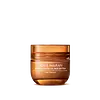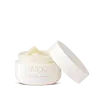What's inside
What's inside
 Key Ingredients
Key Ingredients

 Benefits
Benefits

 Concerns
Concerns

 Ingredients Side-by-side
Ingredients Side-by-side

Water
Skin ConditioningArgania Spinosa Kernel Oil
EmollientGlyceryl Stearate
EmollientGlycerin
HumectantCetyl Alcohol
EmollientButyrospermum Parkii Butter
Skin ConditioningDicaprylyl Carbonate
EmollientEthylhexyl Palmitate
EmollientHydroxyethyl Acrylate/Sodium Acryloyldimethyl Taurate Copolymer
Emulsion StabilisingCaprylic/Capric Triglyceride
MaskingXylitylglucoside
HumectantAloe Barbadensis Leaf Juice
Skin ConditioningAnhydroxylitol
HumectantSodium Stearoyl Glutamate
CleansingSqualane
EmollientXylitol
HumectantGlyceryl Caprylate
EmollientPolysorbate 60
EmulsifyingStearic Acid
CleansingGlyceryl Undecylenate
EmollientCucumis Sativus Fruit Extract
EmollientXanthan Gum
EmulsifyingCitric Acid
BufferingLysolecithin
EmulsifyingTocopherol
AntioxidantCitrullus Lanatus Fruit Extract
Skin ConditioningPhenoxyethanol
PreservativeSclerotium Gum
Emulsion StabilisingEthylhexylglycerin
Skin ConditioningAllantoin
Skin ConditioningPotassium Sorbate
PreservativeSodium Phytate
Panthenol
Skin ConditioningSodium Hyaluronate
HumectantPullulan
Water, Argania Spinosa Kernel Oil, Glyceryl Stearate, Glycerin, Cetyl Alcohol, Butyrospermum Parkii Butter, Dicaprylyl Carbonate, Ethylhexyl Palmitate, Hydroxyethyl Acrylate/Sodium Acryloyldimethyl Taurate Copolymer, Caprylic/Capric Triglyceride, Xylitylglucoside, Aloe Barbadensis Leaf Juice, Anhydroxylitol, Sodium Stearoyl Glutamate, Squalane, Xylitol, Glyceryl Caprylate, Polysorbate 60, Stearic Acid, Glyceryl Undecylenate, Cucumis Sativus Fruit Extract, Xanthan Gum, Citric Acid, Lysolecithin, Tocopherol, Citrullus Lanatus Fruit Extract, Phenoxyethanol, Sclerotium Gum, Ethylhexylglycerin, Allantoin, Potassium Sorbate, Sodium Phytate, Panthenol, Sodium Hyaluronate, Pullulan
Water
Skin ConditioningArgania Spinosa Kernel Oil
EmollientGlycerin
HumectantC15-19 Alkane
SolventButyrospermum Parkii Butter
Skin ConditioningPropanediol
SolventSodium Polyacrylate
AbsorbentSilica
AbrasiveCarthamus Tinctorius Seed Oil
MaskingOlea Europaea Fruit Oil
MaskingVitis Vinifera Seed Oil
EmollientNiacinamide
SmoothingAloe Barbadensis Leaf Juice Powder
Skin ConditioningLespedeza Capitata Leaf/Stem Extract
Skin ConditioningLactic Acid
BufferingAlthaea Officinalis Root Extract
Skin ConditioningCitric Acid
BufferingRosmarinus Officinalis Extract
AntimicrobialThymus Vulgaris Flower/Leaf Extract
MaskingLavandula Stoechas Extract
MaskingTocopherol
AntioxidantHydrogenated Lecithin
EmulsifyingSaccharide Isomerate
HumectantHydroxypropyl Starch Phosphate
Leuconostoc/Radish Root Ferment Filtrate
AntimicrobialCaprylic/Capric Triglyceride
MaskingLecithin
EmollientSodium Citrate
BufferingXanthan Gum
EmulsifyingBenzyl Alcohol
PerfumingPotassium Sorbate
PreservativeSodium Benzoate
MaskingPhenoxyethanol
PreservativeWater, Argania Spinosa Kernel Oil, Glycerin, C15-19 Alkane, Butyrospermum Parkii Butter, Propanediol, Sodium Polyacrylate, Silica, Carthamus Tinctorius Seed Oil, Olea Europaea Fruit Oil, Vitis Vinifera Seed Oil, Niacinamide, Aloe Barbadensis Leaf Juice Powder, Lespedeza Capitata Leaf/Stem Extract, Lactic Acid, Althaea Officinalis Root Extract, Citric Acid, Rosmarinus Officinalis Extract, Thymus Vulgaris Flower/Leaf Extract, Lavandula Stoechas Extract, Tocopherol, Hydrogenated Lecithin, Saccharide Isomerate, Hydroxypropyl Starch Phosphate, Leuconostoc/Radish Root Ferment Filtrate, Caprylic/Capric Triglyceride, Lecithin, Sodium Citrate, Xanthan Gum, Benzyl Alcohol, Potassium Sorbate, Sodium Benzoate, Phenoxyethanol
 Reviews
Reviews

Ingredients Explained
These ingredients are found in both products.
Ingredients higher up in an ingredient list are typically present in a larger amount.
You may know this ingredient as argan oil. Argan Oil has antioxidant, hydrating, and soothing properties.
Studies have shown argan oil can help fight again radical damage from the sun. This makes it effective at preventing hyperpigmentation.
Large amounts of vitamin E found in argan oil helps the skin retain water. Argan oil also contains fatty acids such as linoleic acid, oleic acid, and palmitic acid. It is also a good source of lipids.
Another benefit of argan oil is skin-soothing. It can help reduce inflammation-related skin symptoms.
Argan Oil is effective at regulating sebum production in pores. This can make it effective at treating hormonal acne.
Traditionally, argan oil was used for its antibacterial and antifungal properties. However, argan oil contains fatty acids that may make it not fungal-acne safe.
Argan Trees are native to Morocco.
Learn more about Argania Spinosa Kernel OilThis ingredient is also known as shea butter. It is an effective skin hydrator and emollient.
Emollients help soothe and soften your skin. It does this by creating a protective film on your skin. This barrier helps trap moisture and keeps your skin hydrated. Emollients may be effective at treating dry or itchy skin.
Shea butter is rich in antioxidants. Antioxidants help fight free-radicals, or molecules that may harm the body. It is also full of fatty acids including stearic acid and linoleic acid. These acids help replenish the skin and keep skin moisturized.
While Shea Butter has an SPF rating of about 3-4, it is not a sunscreen replacement.
Shea butter may not be fungal acne safe. We recommend speaking with a professional if you have any concerns.
Learn more about Butyrospermum Parkii ButterThis ingredient is an emollient, solvent, and texture enhancer. It is considered a skin-softener by helping the skin prevent moisture loss.
It helps thicken a product's formula and makes it easier to spread by dissolving clumping compounds.
Caprylic Triglyceride is made by combining glycerin with coconut oil, forming a clear liquid.
While there is an assumption Caprylic Triglyceride can clog pores due to it being derived from coconut oil, there is no research supporting this.
Learn more about Caprylic/Capric TriglycerideCitric Acid is an alpha hydroxy acid (AHA) naturally found in citrus fruits like oranges, lemons, and limes.
Like other AHAs, citric acid can exfoliate skin by breaking down the bonds that hold dead skin cells together. This helps reveal smoother and brighter skin underneath.
However, this exfoliating effect only happens at high concentrations (20%) which can be hard to find in cosmetic products.
Due to this, citric acid is usually included in small amounts as a pH adjuster. This helps keep products slightly more acidic and compatible with skin's natural pH.
In skincare formulas, citric acid can:
While it can provide some skin benefits, research shows lactic acid and glycolic acid are generally more effective and less irritating exfoliants.
Most citric acid used in skincare today is made by fermenting sugars (usually from molasses). This synthetic version is identical to the natural citrus form but easier to stabilize and use in formulations.
Read more about some other popular AHA's here:
Learn more about Citric AcidGlycerin is already naturally found in your skin. It helps moisturize and protect your skin.
A study from 2016 found glycerin to be more effective as a humectant than AHAs and hyaluronic acid.
As a humectant, it helps the skin stay hydrated by pulling moisture to your skin. The low molecular weight of glycerin allows it to pull moisture into the deeper layers of your skin.
Hydrated skin improves your skin barrier; Your skin barrier helps protect against irritants and bacteria.
Glycerin has also been found to have antimicrobial and antiviral properties. Due to these properties, glycerin is often used in wound and burn treatments.
In cosmetics, glycerin is usually derived from plants such as soybean or palm. However, it can also be sourced from animals, such as tallow or animal fat.
This ingredient is organic, colorless, odorless, and non-toxic.
Glycerin is the name for this ingredient in American English. British English uses Glycerol/Glycerine.
Learn more about GlycerinPhenoxyethanol is a preservative that has germicide, antimicrobial, and aromatic properties. Studies show that phenoxyethanol can prevent microbial growth. By itself, it has a scent that is similar to that of a rose.
It's often used in formulations along with Caprylyl Glycol to preserve the shelf life of products.
Potassium Sorbate is a preservative used to prevent yeast and mold in products. It is commonly found in both cosmetic and food products.
This ingredient comes from potassium salt derived from sorbic acid. Sorbic acid is a natural antibiotic and effective against fungus.
Both potassium sorbate and sorbic acid can be found in baked goods, cheeses, dried meats, dried fruit, ice cream, pickles, wine, yogurt, and more.
You'll often find this ingredient used with other preservatives.
Learn more about Potassium SorbateTocopherol (also known as Vitamin E) is a common antioxidant used to help protect the skin from free-radicals and strengthen the skin barrier. It's also fat soluble - this means our skin is great at absorbing it.
Vitamin E also helps keep your natural skin lipids healthy. Your lipid skin barrier naturally consists of lipids, ceramides, and fatty acids. Vitamin E offers extra protection for your skin’s lipid barrier, keeping your skin healthy and nourished.
Another benefit is a bit of UV protection. Vitamin E helps reduce the damage caused by UVB rays. (It should not replace your sunscreen). Combining it with Vitamin C can decrease sunburned cells and hyperpigmentation after UV exposure.
You might have noticed Vitamin E + C often paired together. This is because it is great at stabilizing Vitamin C. Using the two together helps increase the effectiveness of both ingredients.
There are often claims that Vitamin E can reduce/prevent scarring, but these claims haven't been confirmed by scientific research.
Learn more about TocopherolWater. It's the most common cosmetic ingredient of all. You'll usually see it at the top of ingredient lists, meaning that it makes up the largest part of the product.
So why is it so popular? Water most often acts as a solvent - this means that it helps dissolve other ingredients into the formulation.
You'll also recognize water as that liquid we all need to stay alive. If you see this, drink a glass of water. Stay hydrated!
Learn more about WaterXanthan gum is used as a stabilizer and thickener within cosmetic products. It helps give products a sticky, thick feeling - preventing them from being too runny.
On the technical side of things, xanthan gum is a polysaccharide - a combination consisting of multiple sugar molecules bonded together.
Xanthan gum is a pretty common and great ingredient. It is a natural, non-toxic, non-irritating ingredient that is also commonly used in food products.
Learn more about Xanthan Gum